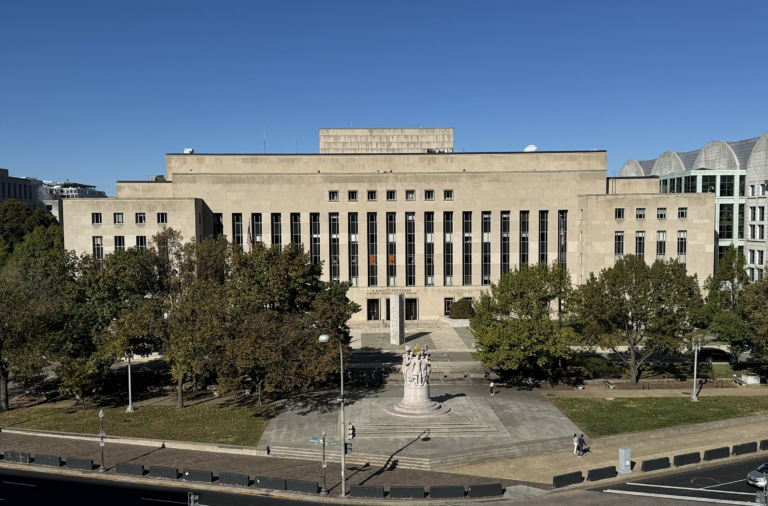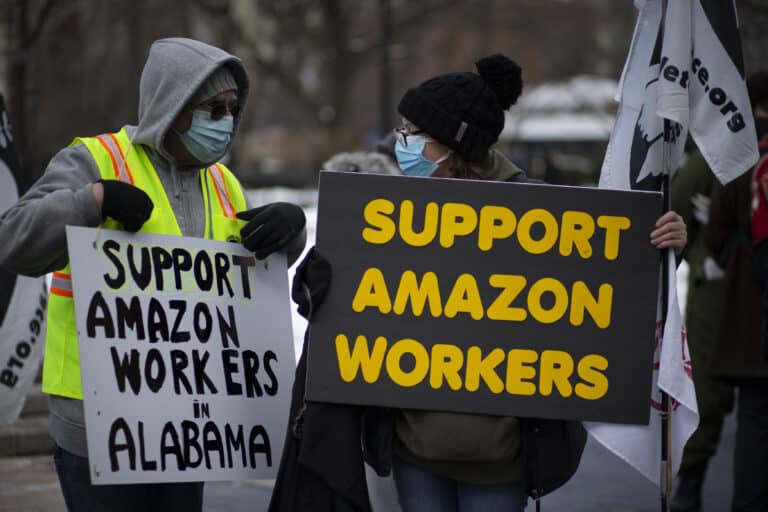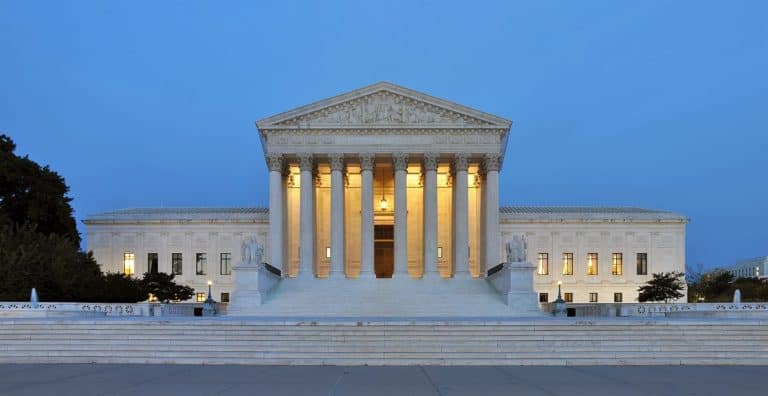Adi Kamdar is a student at Harvard Law School.
Over the last couple decades, Amazon has built out an extensive shopping service, making it second nature to order an item and expect it on your doorstep in a couple days. But how many customers know that their deliveries are arriving courtesy of a controversial, Uber-like program called Amazon Flex?
When news of Amazon Flex first bubbled up just over two years ago, Ben Sachs highlighted two concerns: one, the Flex workers are classified as independent contractors yet are subject to close monitoring; and two, Amazon was perpetuating the idea that being a contractor leads to a “flexibility” that being an employee mythically does not allow. He ultimately noted that this was a “development worth watching.”
Well, Gizmodo‘s Bryan Menegus has taken up the charge.
In a feature published yesterday—titled “Amazon’s Last Mile,” referring to the final journey between local warehouse and home—Menegus interviewed a large handful of current and former drivers about their experiences. The resulting stories resemble the same problems that have surfaced with other gig economy companies, fleshing out a compelling case that Amazon is misclassifying its workers.
Flex operates very similarly to Uber or Lyft. Individuals sign up for the service, which Amazon pitches in advertisements as “a great opportunity to be your own boss.” The requirements are: “be 21 or older, pass [a background check], own a smartphone with Flex installed, and have access to a car, bike, or public transportation. No company cars. No uniforms. Just a non-photo ID badge.” The training is minimal—a series of 20 videos highlighting the expectations and rules.
Flex drivers sign up for a “block,” show up to the facility to retrieve their packages, and use the Flex app to follow a suggested route. The drivers featured in the article got paid an average of $20.50 per hour, but few used it as their primary source of income.
Work is highly variable. Sometimes drivers sign up for a four hour block, but only end up having a couple packages to deliver. On the other hand, sometimes drivers go over the time period they signed up for—but Amazon doesn’t pay them extra, which, according to a driver, the company justifies because it “evens out” the drivers’ lighter blocks.
The article is well worth a read, and highlights several suspect practices:
- The Flex contract allows Amazon to track drivers’ geo-location data, speeds, and other personally identifiable information.
- Drivers are capped at working 40 hours per week.
- Drivers are reprimanded if their vehicles can’t fit every package.
- Several drivers have been deactivated for not performing up to par, even though performance rules are seemingly confusing or contradictory.
- When terminated, drivers are given boilerplate explanations (like violating Flex’s terms of service) or vague details (like date of infraction, but not the particular package at issue). As the article notes, “Whether the package was stolen or an unscrupulous customer merely took advantage of Amazon’s willingness to offer refunds, it’s the courier who takes the fall,” even if the driver has exculpatory camera evidence.
- Drivers have little recourse from Amazon for any problems that arise.
- An additional host of problems come about when Amazon contracts with local courier services, who themselves subcontract drivers.
The piece closes with comments from attorney Shannon Liss-Riordan and National Employment Law Project general counsel Catherine Ruckelshaus. Liss-Riordan believes that Amazon is breaking the law by misclassifying its workers. This belief, as Ruckelshaus points out, is bolstered by the amount of control and micromanagement Amazon seems to exhibit over its Flex workers.
One reason there haven’t been any lawsuits yet, however, is because the Flex contract has an arbitration agreement with a class action waiver. While drivers have the ability to opt out within two weeks of signing, “few do.”
As Amazon continues to grow, it may soon have to come to terms that its Flex practices aren’t sustainable, may not make business sense, and are quite possibly illegal.










Daily News & Commentary
Start your day with our roundup of the latest labor developments. See all
July 14
More circuits weigh in on two-step certification; Uber challengers Seattle deactivation ordinance.
July 13
APWU and USPS ratify a new contract, ICE barred from racial profiling in Los Angeles, and the fight continues over the dismantling of NIOSH
July 11
Regional director orders election without Board quorum; 9th Circuit pauses injunction on Executive Order; Driverless car legislation in Massachusetts
July 10
Wisconsin Supreme Court holds UW Health nurses are not covered by Wisconsin’s Labor Peace Act; a district judge denies the request to stay an injunction pending appeal; the NFLPA appeals an arbitration decision.
July 9
the Supreme Court allows Trump to proceed with mass firings; Secretary of Agriculture suggests Medicaid recipients replace deported migrant farmworkers; DHS ends TPS for Nicaragua and Honduras
July 8
In today’s news and commentary, Apple wins at the Fifth Circuit against the NLRB, Florida enacts a noncompete-friendly law, and complications with the No Tax on Tips in the Big Beautiful Bill. Apple won an appeal overturning a National Labor Relations Board (NLRB) decision that the company violated labor law by coercively questioning an employee […]